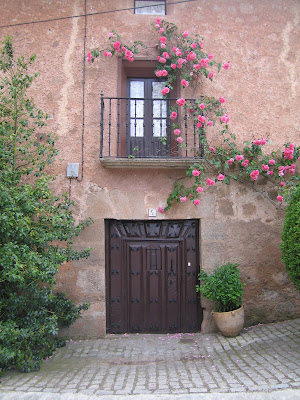
I'm back in Sydney for the week doing research. On Saturday, I took multiple trains out to the Western Sydney Records Repository, in a far western suburb called St. Mary's. It was basically four stops from the end of the line, which in this case is the Blue Mountains. According to the charming archivist, they originally built the sprawling center (it looks and feels a little bit like a military base) out there about forty years ago never expecting to open it to the public. But their other public center happened to be located on some of the most prime real estate in Sydney, and they were renting, not owning. Once they were essentially priced out of most of that space (they retain a small office in the CBD) they opened the repository up to the public. But given that it takes two hours by public transit to get out there and back, it's a wonder anyone gets out there at all. But the collection is pretty terrific, and (unlike the National Library), they let you take digital photos of the documents. So I spent most of Saturday taking snapshots of old inspectors' reports from the NSW Department of Education. It was quite fun. I get to make the pilgrimage again on Thursday and again next Saturday.
However, the highlight of the trip so far has been without a doubt this morning's brunch. My friend R, a political scientist from Berkeley, is also in Australia this fall gathering data for her dissertation, and yesterday was her birthday. So, along with Australian friends B and S, we went out on the town, dancing at The Palms (which really merits its own review, probably on a less family-friendly blog than this) and then out for post-dancing cocktails. So this morning, a big greasy breakfast was definitely in order, and R and I found it in Chinatown.
I had been having intense cravings for "yum cha" (that's Australian for "dim sum") for about two weeks. B recommended Marigold as the best place to go. The restaurant, located at 683-689 George St in Sydney, is on the fifth floor of a building on the edge of Chinatown, a very short walk from Central Station. Actually, it is on the fifth and fourth floors of the building, but the fourth floor is only open for yum cha on Sundays. It was not immediately apparent to us why they would pay rent for an extra floor that they only use once a week, but we decided to go to the mysterious fourth floor since it was Sunday. There was a line, but it moved very quickly. The elevators and the lobby were packed both when we arrived, around 12:30, and when we left, about an hour later, with a good mix of Chinese and non-Chinese clientele. Auspicious!
We were seated after about a five minute wait, but before they had bothered to set the table. So the waiters laid out a tablecloth and place settings while we were seated at the table, somewhat maladroitly, I might add. Inauspicious!
Well, auspices be damned; the food was outstanding. We started with a plate of what looked and tasted like croquettes, but the filling was a garlicky ground pork mixture with water chestnuts. Then, we took a plate of what I guess you could call Chinese shrimp crepes, essentially 2-3 whole shrimp wrapped up in long rice dumpling skins drenched in soy sauce. The shrimp were outstanding, incredibly fresh, and the skins and soy did not compete with the flavor.
The rest of our meal was pretty standard dim sum fare: spring rolls; vegetable and shrimp dumplings; and siu mai. We initially thought the vegetable dumplings were vegetarian, filled only with chives, water chestnuts, and mushrooms, but further bites revealed morsels of pork strewn throughout. Both shrimp dumplings and spring rolls were artfully executed. The real stars, however, were the siu mai. Probably the best I've ever had. The pork was juicy and tender, with no gristly bits strewn throughout.
With our stomachs a bit unsteady at the outset, we passed on some of the more interesting options. One particularly aggressive server came by at least three times proffering scallops fried in won-ton skins. Another offered us a quartered duck, while variations on a theme of chicken feet passed us by in a pungent haze of vinegar. Another woman was ladling up two varieties of tofu out of big buckets. And the dessert cart was topped with colorful cubes of Jello adorned with, for some odd reason, Norwegian flags.
I would heartily recommend Marigold for a good Sydney yum cha. Especially if you top it off with a nice half-hour walk to Newtown in the unexpected sun, which is what we did afterward.





































